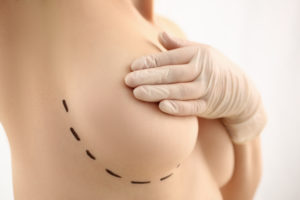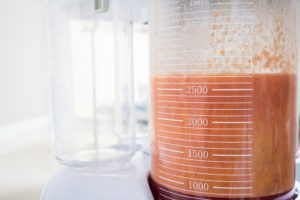What Can I Expect, Recovery-Wise, from a Natural Breast Augmentation?
What is Natural Breast Augmentation?
A natural breast augmentation, or a fat transfer breast augmentation, is a two-part process that takes excess, unwanted fat from one part of the body through liposuction and injects it into the breast to enhance their size and shape. The results can be more natural in look and feel than implants and it leaves no scarring on the breast. Plus, there’s also the sculpting benefits that come with liposuction. While overwhelmingly an extremely safe procedure, there are minimal risks involved, mostly in the liposuction part of the procedure, but generally can include, like all procedures, infection and scarring, as well as loss of breast functionality (i.e. nipple sensitivity and loss of breast feeding ability). Any time you do surgery on the breast you can potentially affect the functionality, though it’s important to note there’s no evidence that shows any loss of breast feeding ability caused by a fat transfer breast augmentation.
The Recovery
 As with any surgical procedure, there is of course recovery time. However with fat transfer breast augmentation the recovery is markedly less than with traditional breast augmentation with implants. Each patient and procedure is different, so each recovery will be different. Generally speaking, your main recovery is actually going to be from the liposuction. The breasts tend not to hurt as much, since your surgeon is not interfering with the muscle in that area (and thus, your nerves), as is the case with traditional traditional breast augmentation with implants. But again, in general, you should give yourself about two weeks to recover: three days of solid downtime and relative downtime for the remainder of the two weeks. Some patients feel comfortable returning to work after five days, while others take longer, depending on the amount of liposuction.
As with any surgical procedure, there is of course recovery time. However with fat transfer breast augmentation the recovery is markedly less than with traditional breast augmentation with implants. Each patient and procedure is different, so each recovery will be different. Generally speaking, your main recovery is actually going to be from the liposuction. The breasts tend not to hurt as much, since your surgeon is not interfering with the muscle in that area (and thus, your nerves), as is the case with traditional traditional breast augmentation with implants. But again, in general, you should give yourself about two weeks to recover: three days of solid downtime and relative downtime for the remainder of the two weeks. Some patients feel comfortable returning to work after five days, while others take longer, depending on the amount of liposuction.
 You may have some minor discomfort, swelling and bruising immediately after your natural breast augmentation, and should rest as much as possible to give your body time to heal, with the exception of some light walking to get the blood moving and prevent blood clots. In the weeks following, you may have left over swelling and bruising in both the breasts and the area of your liposuction. You may be able to resume light physical activity around the two week mark after your natural breast fat transfer, and you will most likely be able to return to your normal activity level and any swelling, bruising and/or discomfort should be gone or minimal four to six weeks after.
You may have some minor discomfort, swelling and bruising immediately after your natural breast augmentation, and should rest as much as possible to give your body time to heal, with the exception of some light walking to get the blood moving and prevent blood clots. In the weeks following, you may have left over swelling and bruising in both the breasts and the area of your liposuction. You may be able to resume light physical activity around the two week mark after your natural breast fat transfer, and you will most likely be able to return to your normal activity level and any swelling, bruising and/or discomfort should be gone or minimal four to six weeks after.
Additionally, to ensure you have the best possible outcome, Dr. Barrett has curated a pre- and postoperative regimen to set his fat transfer breast augmentation patients up for surgical success with the least amount of down time and discomfort possible.
Do you want to learn more about Barrett Plastic Surgery? Keep up to date by subscribing to our blog and following us on social media at Twitter, TikTok, Instagram, Realself, YouTube, Snapchat, Yelp, and Facebook for updates.
Thank you for visiting!




0